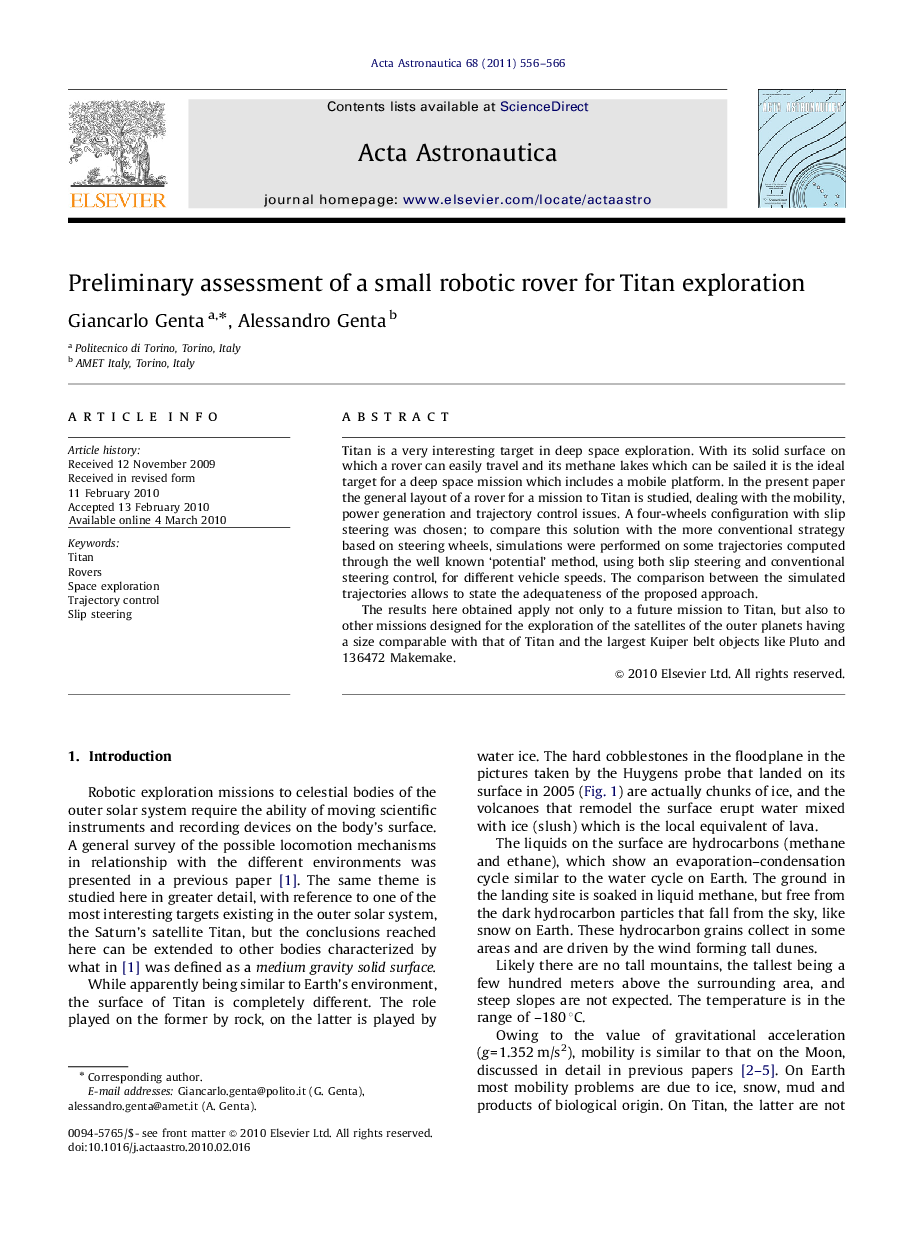| Article ID | Journal | Published Year | Pages | File Type |
|---|---|---|---|---|
| 1715609 | Acta Astronautica | 2011 | 11 Pages |
Titan is a very interesting target in deep space exploration. With its solid surface on which a rover can easily travel and its methane lakes which can be sailed it is the ideal target for a deep space mission which includes a mobile platform. In the present paper the general layout of a rover for a mission to Titan is studied, dealing with the mobility, power generation and trajectory control issues. A four-wheels configuration with slip steering was chosen; to compare this solution with the more conventional strategy based on steering wheels, simulations were performed on some trajectories computed through the well known ‘potential’ method, using both slip steering and conventional steering control, for different vehicle speeds. The comparison between the simulated trajectories allows to state the adequateness of the proposed approach.The results here obtained apply not only to a future mission to Titan, but also to other missions designed for the exploration of the satellites of the outer planets having a size comparable with that of Titan and the largest Kuiper belt objects like Pluto and 136472 Makemake.
